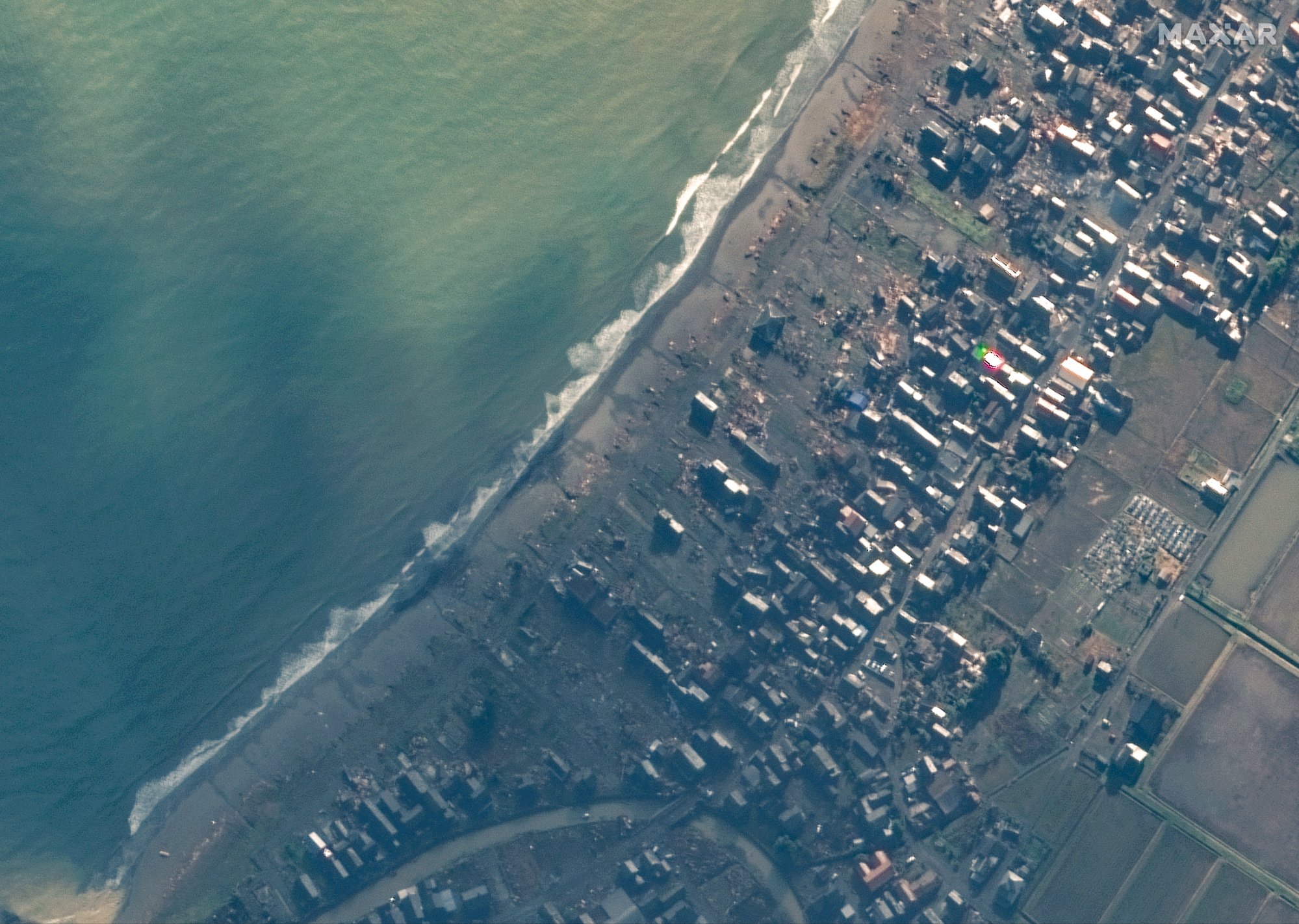Aftershocks continue to shake Japan’s western coast after death toll from earthquakes rises to 57
“It’s not just that it’s a mess. The wall has collapsed, and you can see through to the next room. I don’t think we can live here any more,” Miki Kobayashi, an Ishikawa resident, said as she swept around her house.
The house was also damaged in a 2007 earthquake, she said.
Two of the latest reported deaths came from Suzu, where the death toll grew to 22 people, according to city officials. Twenty-four people died in nearby Wajima city.
Although casualty numbers continued to climb gradually, the prompt public warnings, relayed on broadcasts and phones, and the quick response from the general public and officials appeared to have limited some of the damage.

Toshitaka Katada, a University of Tokyo professor specialising in disasters, said people were prepared because the area had been hit by earthquakes in recent years. They had evacuation plans and emergency supplies in stock.
“There are probably no people on Earth who are as disaster-ready as the Japanese,” he told Associated Press.
Japan is frequently hit by earthquakes because of its location along the “Ring of Fire” – an arc of volcanoes and fault lines in the Pacific Basin.
Katada warned the situation remains precarious and unpredictable. The March 2011 earthquake and tsunami in northeastern Japan had been preceded by other quakes.
“This is far from over,” Katada said.
Tokyo plane collision: French forensic experts to probe accident that killed 5
Tokyo plane collision: French forensic experts to probe accident that killed 5
Predictions by scientists have repeatedly been proven wrong, such as with the 2016 quake in southwestern Kumamoto, an area previously seen as relatively quake-free.
“Having too much confidence in the power of science is very dangerous. We are dealing with nature,” Katada said.
Japanese media’s aerial footage showed widespread damage in the hardest-hit spots, with landslides burying roads, boats tossed in the waters and a fire that had turned an entire section of Wajima city to ashes.

Japan’s military dispatched 1,000 soldiers to the disaster zones to join rescue efforts, Prime Minister Fumio Kishida said on Tuesday.
“Saving lives is our priority and we are fighting a battle against time,” he said. “It is critical that people trapped in homes get rescued immediately.”
An earthquake with a preliminary magnitude of 5.6 shook the Ishikawa area as he was speaking. Earthquakes continued to rock the area, reaching more than 100 aftershocks over the past day.
US President Joe Biden said in a statement that his administration was “ready to provide any necessary assistance for the Japanese people.”


 Free spins for beginners
Free spins for beginners